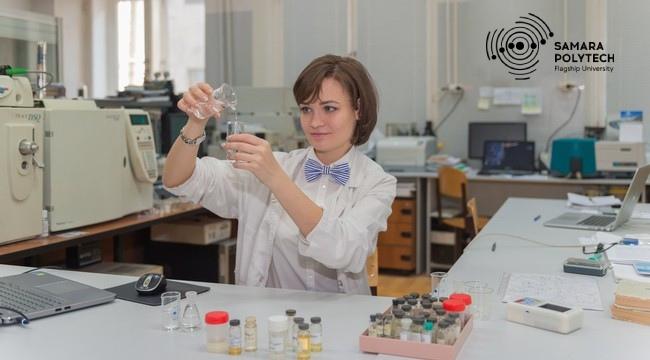The synthesized substances have great preparative properties

Credit: @SamaraPolytech
Scientists of the Department of Organic Chemistry of Samara Polytech have developed approaches to synthesize 1,3,6-tri- and 1,3,6,6-tetrasubstituted adamantane derivatives with a fundamentally new configurationally deterministic vector of cage substituents as a molecular basis for previously unknown tri- and tetrapoid systems. The latest research results are published in the Russian Journal of Organic Chemistry (DOI: 10.31857/S0514749220080108).
“One of the main tasks of the modern organic synthesis is the development of new methods for obtaining complex molecules based on simple and polyfunctional structures. The key problem is the choice of available substrates with great preparative properties”, Elena Ivleva, Candidate of Chemistry, associate professor of the department explains. “Polyfunctional adamantane derivatives containing substituents at the nodal and bridging positions of the cage fully satisfy these conditions, but, at the same time, are difficult to be obtained. This study made it possible to solve the problem of increasing the synthetic availability of 1,3,6-, 1,4,4- and 1,3,6,6-polyfunctional adamantane derivatives in order to use them as a substrate base in the creation of new functional materials.
Thus, a research team led by the head of the department, professor Yuri Klimochkin synthesized a number of new 1,3,6-, 1,4,4-tri- and 1,3,6,6-tetrasubstituted polyfunctional derivatives of the cage structure on the basis of bridged carboxylic acids of the adamantane series. The resulting compounds enable to obtain the new generation of functional materials.
For reference:
Samara State Technical University (SSTU, Samara Polytech) as a flagship university offers a wide range of education and research programs and aims at development and transfer of high-quality and practically-oriented knowledge. The university has an established reputation in technical developments and focuses on quality education, scientific and pragmatic research, combining theory and practice in the leading regional businesses and enterprises. Education is conducted in 30 integrated groups of specialties and areas of training (about 200 degree programs including bachelor, master programs and 55 PhD programs) such as oil and gas, chemistry and petrochemistry, mechanics and energy, transportation, food production, defense, IT, mechanical and automotive engineering, engineering systems administration and automation, material science and metallurgy, biotechnology, industrial ecology, architecture, civil engineering and design, etc.
###
Media Contact
Roman Naumov
[email protected]
Related Journal Article
http://dx.




